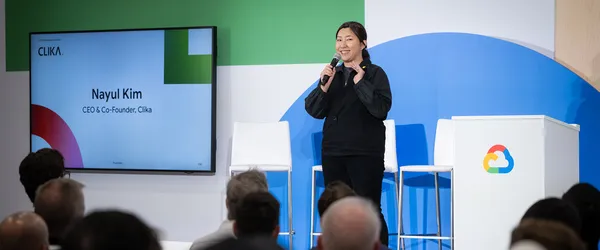WIRED cofounder Kevin Kelly just dropped a masterful piece of storytelling about how “AR Will Spark the Next Big Platform?—?Call it Mirrorworld”. It’s probably the most comprehensive and succinct reflection of the AR industry’s achievements following decades of uphill...

WIRED cofounder Kevin Kelly just dropped a masterful piece of storytelling about how “AR Will Spark the Next Big Platform?—?Call it Mirrorworld”. It’s probably the most comprehensive and succinct reflection of the AR industry’s achievements following decades of uphill battles. And the fact it’s WIRED’s March cover story is yet another signal Augmented Reality (AR) is poised to hit an inflection point in 2019.
I can’t overstate how much I love the story, but I have a beef with the term. After testing several expressions to describe the new AR platform such as The Mesh, AR Cloud, and others?—?Kelly settled on the cool sounding Mirrorworld (Originally popularized by David Gelertner). I have to admit?—?it’s very compelling and more universal than the term I coined in 2017?—?the AR Cloud.
But “Mirrorworld” misses the bigger point.
An exact digital replica of the real world is an essential infrastructure, but it’s only part of the meaning of the new spatial computing platform. Unless you are Snow White’s step mother (or Lord Farquaad), the mirror is merely a reflection of the real world; it doesn’t enhance it.
The Augmented content overlaid on top of the world’s digital replica is what’s really interesting: “context, meaning, and function” in Kelly’s words.
Without it?—?it’s like the Internet before the Web?—?great potential, used by few. Hence my initial instinct to include Augmented Reality in the moniker.
So should we keep looking for a better term that captures the “augmented” sauce on top of the mirror ? Can’t we simply settle on “Spatial Computing”…?
Frankly, I don’t really care how you call it as long as I get it now!
And once we’ll be living spatially?—?nobody will care either.
Until then, here’s the recap of what it means through my AR lens.
What is the AR Cloud
With the recent release of great AR platforms from giant corporations like Google and Apple, creating AR apps became a commodity: It’s free, it’s cool, and it just works. But developers are yet to prove their apps can break through the novelty phase and become essential to our lives.
In order to reach mass adoption, AR experiences need to persist in the real world across space, time, and devices. To achieve that, the industry needs a persistent spatial map of the world that enables sharing and collaboration of AR experiences among many users. The day Apple’s ARKit was launched I dubbed it: The AR Cloud. According to AR industry insiders, it’s destined to become “the most important software infrastructure in computing.”
A New Face For The Internet
The mission statement that defined the web era and made Google the most powerful company on the Internet was: “To organize the world’s information and make it accessible and useful.”
20 years later, in the spatial computing era?—?we need information in the now. Ask any millennial and she’ll confirm:
“I need info about what’s in front of me right now”— what’s this Restaurant, this object, that person? And she is sick of searching it the old fashioned way.
The web navigation metaphor was based on hypertext: click and link. With the AR Cloud, the navigation metaphor shifts to spatial: glance-and-engage, or listen-and-react. In contrast to the web era where information was organized in interlinked web pages, the AR Cloud enables a new way to organize the world’s information spatially, on physical things, places, and people themselves. With it, information is intuitively found at its origin without the need to search. That would allow us to access the how-to-use of any object, the history of any place, and the background of any person?—?just by glancing.
The AR Cloud is about moving the internet off of screens and into the real world.The World Is The Medium, Again
Marshall McLuhan, one of the great thinkers of the 20th century is known for saying: the medium is the message. The idea is that each medium has a different effect on the human sensorium. The message changes because its context is different. But in a new book about Media from this century, The Marvelous Clouds, John Peters says: “The world itself is the medium.” For many millennia, humans consumed information directly from the real world, from things, places, and people. The world as the original medium is making a comeback. Today, in almost every task in our lives, we constantly switch our attention from digital data to the real world. Many of us do this hundreds of times a day. How much time and money can we save if we eliminate that switch?
https://medium.com/media/1a36071dbb4cfdcee959a47ebfbd451c/hrefWhat if we synchronize all digital information with the real world so that we can fully focus our attention on the real-world task at hand?
According to a Harvard Business School study, companies using Augmented Reality yield process savings of over 50%. These enterprises’ savings could easily be translated into consumer savings and an increase in productivity. What if we could sync data and the physical for a whole nation?
It could increase GDP by 20% or more.The AR Cloud will be at the heart of synchronizing the digital and physical world.
The New Spatial Economy
Changing how information is organized will profoundly disrupt the Web economy. A handful of companies became giants thanks to the current model. No wonder they are all contenders in the battle for AR Cloud dominance. The Web Economy was defined by “clicks on links” (CPM/CPC). The AR Cloud-based spatial economy will transition to what I like to call “clicks on bricks”?—?a punning rhyme that captures a new world where everything is driven by digital interaction with the physical world.
The challenge to bring these two discrete worlds together to reduce the friction in commerce is still keeping many CEOs up at night.
Why is that so important? How much value can be generated by closing this gap?
With spatial interactions, marketers could learn a great deal more about customer interaction with their products: How do they use it? In what context? How often?
It will become the Nielsen for the real world!This information collected through these interaction would serve as feedback for product improvement, and will be so much more lucrative than any ad or search term could ever be.
Since “clicks on bricks” introduces a more subtle information gathering and deliver it offers a far better user experience (who likes ads, really?) and is significantly more valuable to marketers?—?it will eventually wipe out the current advertising convention “repeat ad nauseam”?—?which is currently bombarding us with ads anywhere we look.
The good news: the dystopian prophecy depicting ads all around us in Keiichi Matsuda’s short film Hyper-Reality will never materialize. Like any good prophecy —
it’s a warning to focus on the important things: user experience and value creation in order to avert that disturbing future.There Will Be Many AR Clouds
Just like real clouds come in all shapes and sizes, so will the AR Cloud. Yes, there will be many styles for different purposes, some small, some big, some fluffy, some dense; some will be created and consumed on mobile, and some on other devices such as smartglasses, robots or cars; some will be private behind firewalls and some public; some will even use markers and require lengthy setups, and some instant turn-key, some will be crowd-sourced on demand to address an urgent need, and some generated as a by-product of other experiences.
There is a growing concern in the industry that the AR Cloud, being such a critical infrastructure, might be controlled by corporations and could become fragmented across too many instances. Moreover, with all that mind blowing promise, the single thing that will make or break the AR Cloud is how the industry will handle privacy.
With AR, the amount of data collected about us by corporations will accelerate many fold when everything we do is captured and analyzed on camera.Privacy will be a huge concern that must never be underestimated.
Remember this face.
https://medium.com/media/2cb61974200545ef636c6bdd411bf942/hrefThe Need For a Unifying AR Cloud Theory
I am proud to be a founding board member of the recently incorporated Open AR Cloud Association (OpenARCloud.org). Several dozen AR pioneers joined forces to kick off an initiative for collaboration among the various AR Cloud technologies. And poignantly, it has a strong focus on privacy.
Its mission: drive the development of open and interoperable AR Cloud technology, including data and standards to connect the physical and digital worlds for the benefit of all. Search works because every website shares the same underlying HTML structure. We need a similar standard for the AR Cloud, so it can be discovered by what Charlie Fink calls “the Universal Visual Browser.”
https://medium.com/media/b9ed4d47f5070c25adefda19d437fede/hrefThis effort could enable us to build a useful spatial map of the entire world. Companies like 6D.ai, in which Super Ventures is an investor, are planning to get millions of people to help scan the world anywhere they live or work and upload it to an open federated AR Cloud. Perhaps it could leverage blockchain to incentivize people and especially businesses to contribute their existing content: videos, photos, scans, 3D content, etc to create a ubiquitous digital copy of the world.
I believe it will enable humanity to make a big leap forward.
Humanity’s Next Big Leap: The Spatial Wikipedia
The AR Cloud can be viewed as a shared memory of the physical world that enables users to have shared experiences, not just shared videos or messages. It allows people to collaborate in play, design, study, or team-up to problem solve anything in the real world. Kelly, previously wrote “The internet gave us superpowers” thanks to its ability to connect humans in real time. But, “the main event has barely started!” One day, he says, a million people around the globe will have created something stupendous.
I see this as a challenge for the AR industry to create The SPATIAL WIKIPEDIA.
Kelly continues: “Just as past generations gained textual literacy in school…the next generation will master visual literacy…” In other words, the AR Cloud will look less like a book and more like a graphic novel.
With the AR Cloud, we will enable millions of people to collaborate?—?not with text?—?but by visually capturing the collective human intelligence about every thing, place or person, and make it available?—?not by search?—?but at a glance anywhere you go.
***
This post is an excerpt I wrote for Charlie Fink’s upcoming book: “Convergence?—?How the World Will Be painted With Data”
Additional reading about the AR Cloud in my previous posts:
For more about the history and technical aspects of the AR Cloud:
ARKit and ARCore will not usher massive adoption of mobile AR?—?the AR Cloud Will
For more about companies and investors in the AR Cloud:
The AR Cloud is Making it Rain!
More on the AR Cloud economy:
AR and Blockchain: A Match Made in The AR Cloud
Mirrorworld v. AR Cloud or: How I Learned to Stop Worrying and Love the Spatial Future was originally published in Super Ventures Blog on Medium, where people are continuing the conversation by highlighting and responding to this story.










